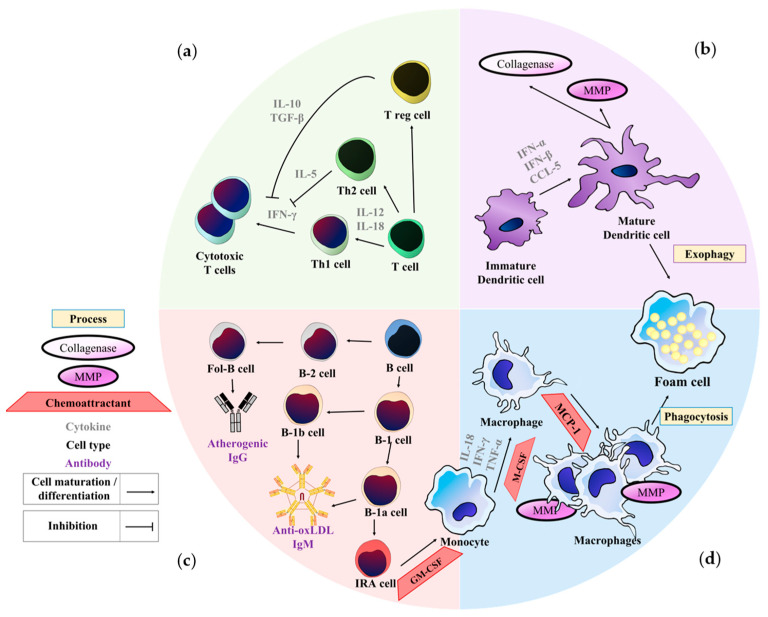Figure 1.
Role of monocytes, macrophages, dendritic cells, T-cells, and B-cells in atherosclerosis: (a) T-cells in atherosclerosis: Existence of IL-12 and IL-18 trigger Th1 skewing and secretion of IFN-γ to recruit cytotoxic T cells [9,10,11]. IL-5 secreted by Th2 cells [22] with IL-10 and TGF-β secreted by regulatory T cells (T reg) inhibit the function of IFN-γ [30,31]; (b) Dendritic cells in atherosclerosis: IFN-α, IFN-β and CCL-5 secreted by dendritic cells stimulate maturation of immature dendritic cell into the mature dendritic cell [19]. Mature dendritic cells produce metalloproteinase (MMP) and collagenase to destabilize atherosclerotic plaque. Mature dendritic cells also take up oxLDL by exophagy and transform into foam cells [20]; (c) B-cells in atherosclerosis: B-cells differentiated into 2 main subtypes, B1 cells, and B2 cells. In B1 cells, it further differentiates into B-1a and B-1b cells, both secrete athero-protective IgM. B-1a cell derived from B-1a cell secretes GM-CSF to enhance the proliferation of Ly6C monocytes. In B-2 cell, Follicular B cell (Fol-B) produce atherogenic IgG [39]; (d) Monocytes and macrophages in atherosclerosis: The presence of potent inflammatory cytokines, IL-18, TNF-α and IFN-γ, they initiate atherosclerosis by activating monocytes and macrophages. Macrophage colony-stimulating factor (M-CSF) monocytes stimulate the differentiation of monocytes into macrophages. Monocytes chemoattractant protein-1 (MCP-1) further attract other macrophages to phagocytose oxLDL to become foam cells as well as metalloproteinases (MMP) to degrade the fibrous cap of atherosclerotic plaque [12].

